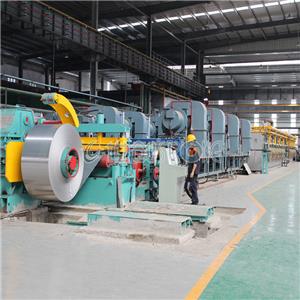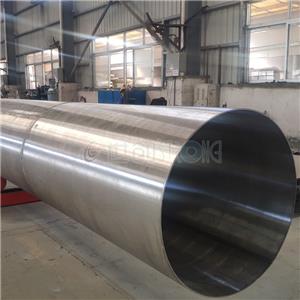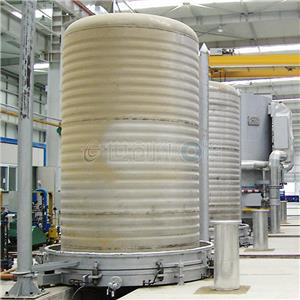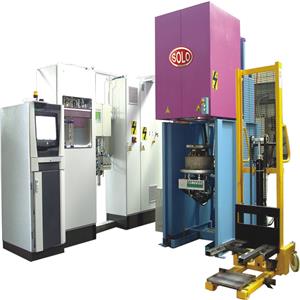Basic knowledge for heat treatment
Basic knowledge about heat treatment
This post covers most heat treatment processes including the basic concepts for the processes. It is a good for new beginner for heat treatment industry.
Age Hardening
Hardening by aging, usually after rapid cooling or cold working. The term as applied to soft, or low carbon steels, relates to a wide variety of commercially important, slow, gradual changes that take place in properties of steels after the final treatment. These changes, which bring about a condition of increased hardness, elastic limit, and tensile strength with a consequent loss in ductility, occur during the period in which the steel is at normal temperatures.
Aging
A change in properties that occurs at ambient or moderately elevated temperatures after hot working or a heat treating operation (quench aging in ferrous alloys), or after a cold working operation (strain aging). The change in properties is often, but not always, due to a phase change (precipitation), but does not involve a change in chemical composition. In a metal or alloy, a change in properties that generally occurs slowly at room temperature and more rapidly at higher temperatures.
Annealing
Heating to and holding at a suitable temperature and then cooling at a suitable rate, for such purposes as reducing hardness, improving machinability, facilitating cold working, producing a desired microstructure, or obtaining desired mechanical, physical, or other properties. When applicable, the following more specific terms should be used: black annealing, blue annealing, box annealing, bright annealing, flame annealing, graphitizing, intermediate annealing, isothermal annealing, malleablizing, process annealing, quench annealing, recrystallization annealing, and spheroidizing. When applied to ferrous alloys, the term annealing, without qualification, implies full annealing. When applied to nonferrous alloys, the term annealing implies a heat treatment designed to soften an age-hardened alloy by causing a nearly complete precipitation of the second phase in relatively coarse form. Any process of annealing will usually reduce stresses, but if the treatment is applied for the sole purpose of such relief, it should be designated stress relieving.
Austempering
This is a method of hardening steel by quenching from the austenitizing temperature into a heat extracting medium (usually salt) which is maintained at some constant temperature level between 400” and 800” F and holding the steel in this medium until austenite is transformed to bainite.
Austenitising
Forming austenite by heating a ferrous alloy into the transformation range (partial austenitizing) or above the transformation range (complete austenitizing). When used without qualification, the term implies complete austenitizing.
Austenite
The solid solution of iron and carbon which is attained by heating to high temperatures above the upper critical temperature. This temperature or temperature range is called the austenitizing temperature and must be attained to obtain the proper microstructure and full hardness of steel in heat treating. The austenitizing temperature varies for the different grades of carbon, alloy and tool steels.
Bainite
A eutectoid transformation product of ferrite and a fine dispersion of carbide, generally formed at temperatures below 840 to 930 F (450 to 500 °C): upper bainite is an aggregate containing parallel lath-shape units of ferrite, produces the so-called feathery appearance in optical microscopy, and is formed at temperatures above about 660 F (350 °C) ; lower bainite consists of individual plate-shape units and is formed at temperatures below about 660 F (350 °C). Also, a slender, needle-like (acicular) microstructure appearing in spring steel strip characterized by toughness and greater ductility than tempered Martensite. Bainite is a decomposition product of Austenite best developed at interrupted holding temperatures below those forming fine pearlite and above those giving Martensite.
Bath Annealing
Is immersion is a liquid bath (such as molten lead or fused salts) held at an assigned temperature-when a lead bath is used, the process is known as lead annealing.
Black Annealing
A process of box annealing or pot annealing ferrous alloy sheet, strip or wire after hot working and pickling.
Blue Annealing
Heating hot rolled ferrous sheet in an open furnace to a temperature within the transformation range and then cooling in air, in order to soften the metal. The formation of a bluish oxide on the surface is incidental.
Bluing
Subjecting the scale-free surface of a ferrous alloy to the action of air, steam, or other agents at a suitable temperature, thus forming a thin blue film of oxide and improving the appearance and resistance to corrosion.
Brazing
Joining metals by fusion of nonferrous alloys that have melting points above 800 F (425 °C), but lower than those of the metals being joined. May be accomplished by a torch. Filler metal is ordinarily in rod form in torch brazing; whereas in furnace and dip brazing the work material is first assembled and the filler metal may then be applied as wire, washers, clips, bands, or may be bonded, as in brazing sheet.
Bright Annealing
The process of annealing in a protective atmosphere so as to prevent discoloration of the bright surface desired.
Carbon Potential
A measure of the capacity of an environment containing active carbon to alter or maintain, under prescribed conditions, the carbon concentration in a steel.
Carbonitriding
A case hardening process in which a suitable ferrous material is heated above the lower transformation temperature in a gaseous atmosphere of such composition as to cause simultaneous diffusion of carbon and nitrogen into the matrix of the material. The process is completed by cooling at a rate that produces the desired properties in the work piece.
Carburizing (Cementation)
Adding carbon to the surface of iron-base alloys by absorption through heating the metal at a temperature below its melting point in contact with carbonaceous solids, liquids or gases. The oldest method of case hardening.
Case Hardening
A generic term covering several processes applicable to steel that change the the chemical composition of the surface layer by absorption of carbon or nitrogen, or a mixture of the two, and, by diffusion, create a concentration gradient. A heat treatment or a combination of heat treatments of surface hardening involving a change in the composition of the outer layer of an iron-base alloy in which the surface is made substantially harder by inward diffusion of a gas or liquid followed by appropriate thermal treatment. Typical hardening processes are carburizing, cyaniding, carbo-nitriding and nitriding.
Crystallization
The formation of crystals by the atoms assuming definite positions in a crystal lattice. This is what happens when a liquid metal solidifies. (Fatigue, the failure of metals under repeated stresses, is sometimes falsely attributed to crystallization.)
Cyaniding
Surface hardening by carbon and nitrogen absorption of a steel article or a portion of it by heating at a suitable temperature in contact with cyanide salt, followed by quenching.
Decarburization
When steel is subjected to high temperatures, such as are used in hot rolling, forging, and heat treating in a media containing air, oxygen, or hydrogen there is a loss of carbon at the surface which is known as decarburization. This resultant loss of carbon or chemistry change at the surface of the steel part reduces the strength of the part by reducing the size of the section and produces a softer surface hardness than the core of the part.
Ductility
The property of metals that enables them to be mechanically deformed when cold, without fracture. In steel, ductility is usually measured by elongation and reduction of area as determined in a tensile test.
Hardenability
This relates to the ability of steel to harden deeply upon quenching, and takes into consideration the size of the part and the method of quenching. The test used to determine the hardenability of any grade of steel is the Jominy Test.
Hardening
Increasing hardness by suitable treatment, usually involving heating and cooling. When applicable, the following more specific terms should be used: age hardening, case hardening, flame hardening, induction hardening, precipitation hardening, quench hardening.
Heat Treatment
Altering the properties of a metal by subjecting it to a sequence of termperature changes, time of retention at specific temperature and rate of coolingtherfrom being as important as the temperature itself. Heat treatment usually markedly affects strength, hardness, ductility, malleability, and similar properties of both metals and their alloys.
Homogenizing Annealing
An annealing treatment carried out at a high temperature, approaching the solidus temperature, for a sufficiently long time that inhomogeneous distributions of alloying elements are reduced by diffusional processes.
Isothermal Annealing
A process in which a ferrous alloy is heated to produce a structure partly or wholly austenitic, and is then cooled to and held at a temperaure that causes transformation of the austenite to a relatively soft ferrite-carbide aggregate.
Martempering or Marquenching
This is a method of hardening steel by quenching from the austenitizing temperature into some heat extracting medium, usually salt, which is maintained at some constant temperature level above the point at which martensite starts to form (usually about 450” F), holding the steel in this medium until the temperature is uniform throughout, cooling in air for the formation of martensite and tempering by the conventional method. The advantages of this method of interrupted quenching are a minimum of distortion and residual strains. The size of the part can be considerably larger than for austempering.
Martensite
A microconstituent or structure in quenched steel which has the maximum hardness of ally of the other steel structures resulting from the transformation of austenite.
Nitriding
Introducing nitrogen into a solid ferrous alloy by holding at a suitable temperature (below Ac1 for ferritic steels) in contact with a nitrogenous material, usually ammonia of molten cyanide of appropriate composition. Quenching is not required to produce a hard case. Process of surface hardening certain types of steel by heating in ammonia gas at about 935-1000 (degrees) F, the increase in hardness being the result of surface nitride formation. Certain alloying constituents, principal among them being aluminum, greatly facilitate the hardening reaction. In general, the depth of the case is less than with carburizing.
Normalizing
Heating steels to approximately 100 F above the critical temperature range followed by cooling to below that range in still air at ordinary temperatures. This heat treat operation is used to erase previous heat treating results in carbon steels to 40% carbon, low alloy steels, and to produce a uniform grain structure in forged and cold worked steel parts.
Oil Hardening
A process of hardening a ferrous alloy of suitable composition (generally alloys) by heating within or above the transformation range and quenching in oil.
Overheating
Heating a metal or alloy to such a high temperature that its properties are impaired. When the original properties cannot be restored by further heat treating, by mechanical working or by a combination of working and heat treating, the overheating is known as burning.
Oxidation
The addition of oxygen to a compound. Exposure to atmosphere sometimes results in oxidation of the exposed surface, hence a staining or discoloration. This effect is increased with temperature increase.
Pearlite
Microscopic structure of steel which is produced by slow cooling or air cooling low to medium carbon and low alloy steels from the austenitic state.
Preheating
Heating before some further thermal or mechanical treatment. For tool steel, heating to an intermediate temperature immediately before austenitizing. For some nonferrous alloys, heating to a high temperature for a long time, in order to homogenize the structure before working.
Quench Hardening
A process of hardening a ferrous alloy of suitable composition by heating within or above the transformation range and cooling at a rate sufficient to increase the hardness substantially. The process usually involves the formation of martensite.
Quenching
In the heat treating of metals, the step of cooling metals rapidly in order to obtain desired properties; most commonly accomplished by immersing the metal in oil or water. In the case of most copper base alloys, quenching has no effect other than to hasten cooling.
Quenching and Tempering
In this operation the procedure consists of heating the material to the proper austenitizing temperature, holding at that temperature for a sufficient time to effect the desired change in crystalline structure, and quenching in a suitable medium – water, oil or air depending on the chemical composition. After quenching, the material is reheated to a predetermined temperature below the critical range and then cooled under suitable temperatures (tempering).
Refractory Alloy
A term applied to those alloys which due to hardness or abrasiveness present relative difficulty in maintaining close dimensional tolerances.
Resilience
The tendency of a material to return to its original shape after the removal of a stress that has produced elastic strain.
Sintering
The thermal treatment of a powder or compact at a temperature below the melting point of the main constituent, for the purpose of increasing its strength by bonding together of the particles.
Stabilizing Treatment
A thermal treatment designed to precipitate material from solid solution, in order to improve the workability, to decrease the tendency of certain alloys to age harden at room temperature, or to obtain dimensional stability under service at slightly elevated temperatures.
Stainless Steel
Corrosion resistant steel of a wide variety, but always containing a high percentage of chromium. These are highly resistant to corrosion attack by organic acids, weak mineral acids, atmospheric oxidation, etc.
Stress Relief
Low temperature annealing for removing internal stresses, such as those resulting on
a metal from work hardening or quenching.
Sub-critical Annealing
Stress Relief Annealing. A heat treating operation used to relieve or dissipate stresses in weldaments, heavily machined parts, castings and forgings. The parts are heated to 1150” F, uniformly heated through, and are either air cooled from temperature or slow cooled from temperature depending on the type of part and subsequent finishing or heat treating operations.
Surface Hardening
A generic term covering several processes applicable to a suitable ferrous alloy that produce, by quench hardening only, a surface layer that is harder or more wear resistant than the core. There is no significant alteration of the chemical composition of the surface layer. The processes commonly used are induction hardening, flame hardening and shell hardening. Use of the applicable specific process name is preferred.
Temper
In heat treatment, re-heating hardened steel or hardened steel or hardened cast iron to some temperature below the eutectoid temperature for the purpose of decreasing the hardness and increasing the toughness. The process also is sometimes applied to normalized steel.
Tempering
Reheating hardened, usually quenched, steel to some temperature below the lower critical temperature followed by any desired rate of cooling after the steel has been thoroughly soaked at temperature. Usual tempering temperatures are 300” to 1100” F.
Water Hardening
High carbon grades of tool steel, straight carbon steels and low alloy steels that are hardened by quenching in water during the heat treating operation.
Guangdong Strong Metal Technology Co., Ltd. is a leading supplier of bright annealing furnaces with over 30 years' experience. We design, manufacture and supply heat treatment equipment for stainless steel cold rolling mills. Our furnaces for annealing stainless steel strip coils under protective gas atmosphere are widely used in the stainless steel industry both in China and abroad. We engaged in india market since 2010 by supplying India bright annealing lines to the key stainless steel makers in india. Since then Strong Metal is well recognized as the leading supplier in india of Bright annealing lines. We are a trust worthy bright annealing line supplier in india with annually innovation in heat treatment for stainless steel strip coils.
Please feel free to conatct us if you have any inquiry about heat treatment. thank you.




